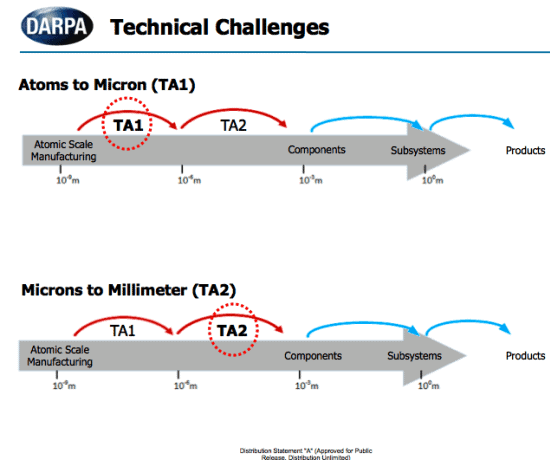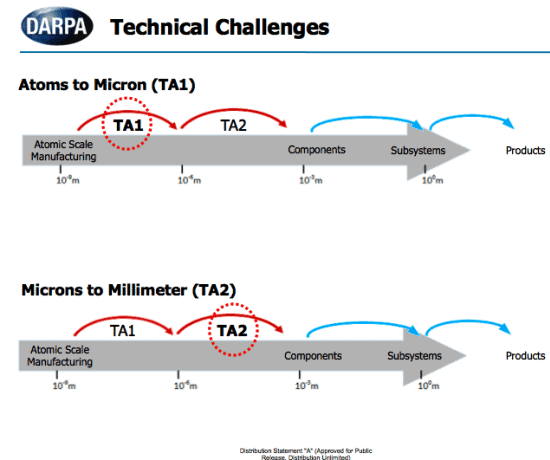
A few weeks ago we posted the announcement of a new DARPA program, the Atoms To Product (A2P) project. For those who were not able to catch the webinar explaining the initiative, more information is available in an article on Fedscoop “DARPA wants help closing nanotechnology’s ‘assembly gap’:
The Pentagon’s advanced research agency wants to do something that currently cannot be done: Take things built at a really, really small level and scale them for production in really big systems.
Solving that problem will be the task of those behind the Atoms To Product (A2P) project at the Defense Advanced Research Projects Agency’s Defense Sciences Office. DARPA is soliciting proposals for how researchers can further advance and leverage nanotechnology.
Stephanie Tompkins, director of the Defense Sciences Office, said the project fits into two of the office’s main focal points: finding ways to adapt to a growing market of globally available technology and incorporating it into military systems. Currently, technology is moving too fast and the adoption costs are unsustainable for military systems. DARPA hopes the A2P project will provide a cheaper way to integrate new technology on a variety of scales. …
A2P will focus on two technical links in the scaling hierarchy: moving atomic-level tech into the micron or molecule level, then moving the micron level into the millimeter level. The atoms-to-micron level will produce what’s known as feedstock — raw materials used in product manufacturing — with that material eventually allowing scientists to move it into millimeter-sized components. …
Yesterday’s post on extensions to the scaffolded DNA origami method fall toward the far end of the TA1 step in the above slide, the atoms to micrometer step. Perhaps the real challenge remaining in this first step is not an increase in scale per se, since the 300 nm by 200 nm DNA arrays are only a factor of three from the micrometer scale, but a way to use these arrays as organizing scaffolds for methods to make an array of molecules much wider than the world of biomolecules.
—James Lewis, PhD
